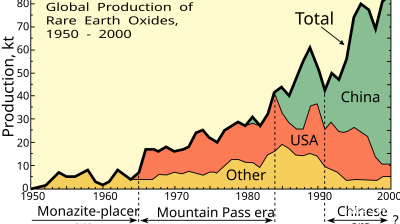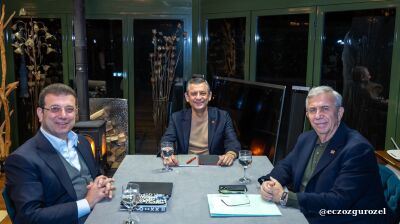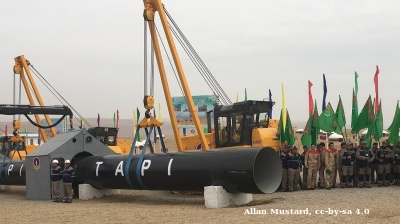It has been only a week since the BRICS summit in South Africa was supposed to rally the five members of the BRICS group into a new expanded BRICS+ bloc designed to challenge the Western hegemony over global geopolitics, but the main protagonists have already engaged in a bitter squabble after China issued a new “standard map” of its borders.
The problem is that China’s map includes territory that clearly belongs to its neighbours in what some have called an attempt at cartographic annexation. The map provoked loud protests from Chinese rivals in Southeast Asia when China moved maritime borders in the South China Sea, expanding what it claims is its maritime sovereign territory, especially encroaching on water claimed by the Philippines and Taiwan. That was to be expected.
More surprisingly, China claims a strip of territory on the Sino-Indian border that has long been in dispute and the scene of regular military clashes between the two emerging market powerhouses. And outraged Delhi protested loudly as the new map and lawmakers wryly issued their own map entitled “India 3.0” that included all of China within the “Indian” borders.

And even more surprising than that, the map claims some of Russia’s territory in the Far East. As the Russia has become heavily dependent on Beijing as its most powerful ally in its showdown with the West, the Kremlin has yet to comment on the Chinese standard map, but no doubt protests have been privately sent from Moscow to Beijing.
Nine-dash line
The map is an extension of China’s highly controversial “nine-dash line” that encompasses China’s hotly disputed claims to territory in the South China Sea, and the expanded borders in the new map have already been dubbed the “ten-dash line” thanks to the new territories claimed by Beijing on the map. (The new Barbie movie has been banned in Vietnam as it reportedly includes a scene that depicts a map that includes the nine-dash line that impinges on Vietnam’s territory as well.)
The map was published by China’s Ministry of Natural Resources on August 28. The new map repeats the nine-dash line claims that have already been rejected by the United Nations’ Law of the Sea tribunal, while the map adds new claims on territory around Taiwan and to India’s north, hence the new “ten-dash line” designation.
China has long claimed control over the entirety of the South China Sea as well as Taiwan, a claim disputed by nearly everyone in the South China Sea. But in the new map the dashes drawn near Taiwan could indicate that China also sees Japanese islands in the Ryukyus as its territory, say experts.
The map was released only days after President Xi Jinping declared at the latest BRIC summit that “hegemonism is not in China’s DNA.”
The biggest furore arose around China’s claims on more Indian territory on their mutual border. The map makes unilateral claims on two new areas, Arunachal Pradesh and Aksai Chin, angering both India and Nepal.
India’s foreign ministry protested vocally, as did Nepal, Vietnam, Malaysia and Taiwan. Arindam Bagchi, a spokesman for India’s External Affairs Ministry, said in a statement: “We reject these claims as they have no basis. Such steps by the Chinese side only complicate the resolution of the boundary question.” Indian and Chinese troops have killed each other repeatedly in border battles over the two areas claimed by China, with the first fighting happening in 1962.
It seems that nearly everyone in the region had a bone to pick with the map. “Malaysia does not recognise China’s 2023 standard map, which outlines portions of Malaysian waters near Sabah and Sarawak as belonging to China,” the Malay foreign ministry said in an August 30 statement.
A day later, the Philippines Department of Foreign Affairs issued a statement that it “rejects the 2023 version of China’s Standard Map… because of its inclusion of the nine-dash line (now a ten-dash line) that supposedly shows China’s boundaries in the South China Sea … This latest attempt to legitimise China’s purported sovereignty and jurisdiction over Philippine features and maritime zones has no basis under international law, particularly the 1982 United Nations Convention on the Law of the Sea (UNCLOS).”
However, more surprisingly the map also makes claims on Russian territory in the Far East, the Bolshoy Ussuriysky Island.
The Kremlin has yet to comment on the map but remains sensitive about territorial claims on its eastern border and has yet to return the Kuril islands that were captured by the Soviet Union from Japan during WWII. Technically Russia and Japan are still at war as a result of the unsettled dispute.
Division holding BRICS+ back
Critics of the BRICS+ group have argued the group cannot mount a serious change to the West as the members not only have little in common, but that they are also divided by disputes that will be hard to reconcile. And the standard map row only bolsters the argument.
Tempers have frayed to such a point that Chinese President Xi Jinping has reportedly decided to skip the upcoming G20 meeting, slated to take place in New Delhi on September 9-10, the next big meeting of emerging market powers that was supposed to build on the August BRICS summit in South Africa. Where the BRICS group is a political alliance, the G20 is the economic equivalent.
Xi’s no-show decision followed months of failed efforts by multiple G20 ministerial fora to find common ground on topics ranging from health care to climate change, due to disagreements over the conflict in Ukraine and burden-sharing between rich and developing countries. Experts say that without any big policy wins likely, Xi has decided to leave the horse-trading work to minions. The decision also highlights the early stage that BRICS bloc is at in terms of creating a new institution.
The standard map row also bolsters the arguments of those that claim Beijing is not interested in building an alliance amongst the leading emerging markets but is intending to aggressively use it to pursue its own national interests and replace the US hegemony with Chinese one, where the other emerging markets are subjected to Beijing’s dictats.
The tensions between the BRICS members were visible in the speeches on the first day of the BRICS summit but the participants were hoping to paper over their differences by focusing on pragmatic issues that united them, such as increasing trade and economic cooperation, introducing a non-dollar currency of exchange and presenting a united emerging markets front in the existing multilateral organisations such as the UN.
G20 coming into focus
However, with that unity falling apart within weeks of the BRICS summit, the whole programme looks much less likely to work now. The G20 has already succeeded the G7 club of rich countries in importance and was the organiser of a global response to the 2008 Grand Financial Crisis, caused by the meltdown of the US housing market.
The current G20 comprises 19 national governments plus the European Union. There are 11 members from the developing world of which seven are now also BRICS+ members: Argentina, Brazil, China, India, Indonesia, Korea, Mexico, Russia, Saudi Arabia, South Africa and Turkey. And there are eight countries that are members of G20, plus the EU, which sneaks in another 27 developed world countries: Australia, Canada, France, Germany, Italy, Japan, UK, US, plus the EU. As France, Germany, and Italy are G20 members and in the EU, they are in effect represented twice, wrote Professor Jeffrey Sachs in an article arguing for G20 expansion. The EU is represented at the G20 by European Commission President Ursula von der Leyen and the President of the European Council Charles Michel.
The G20 therefore represents 43 countries (27 EU members plus 16 non-EU countries) with just 20 leaders at the table. While those 43 countries constitute just 22% of UN member states (by a raw count), they nonetheless include about 63% of the world’s population and 87% of gross world output, reports Sachs.
Currently the G20 is fairly balanced between the developed and emerging market worlds, but one of the items on the agenda at the upcoming meeting is to expand the group to G21 with the addition of the African Union that represents Africa’s 54 countries, which is currently headed by President Azali Assoumani of the Union of Comoros, who took over from Felix Tshisekedi, the President of the Democratic Republic of the Congo and Macky Sall, the President of Senegal, who were the heads last year.
Currently, South Africa is the only African member of the G20 and has the smallest economy in the group, but adding the African Union in parallel to the EU’s membership would significantly increase the body’s clout and in many ways make it a far more representative body of the world’s population than the 193-country strong UN.
“The African Union’s 55 countries (more than one-quarter of UN members) are home to 1.4bn people (17.5% of the global total) and $2.6 trillion in annual output at market exchange rates (almost 3% of world GDP). All told, Africa currently has roughly the same population as China or India, and an economy that would come in eighth – just behind France and ahead of Italy – in a country ranking. Africa’s share of the world’s population and output will grow in future years,” says Sachs.
The G20 is a far more democratic body than the UN, as the UN Security Council mechanism is dominated by the developed world (Europe: France, Russia, UK; Americas: US; Asia: China) that leave the Western powers with a firm grip on the UN’s actions by dint of their ability to veto anything they don’t like.
Africa and Latin America are two of the world’s major geographies but are entirely missing from the UN Security Council infrastructure and their lack of representation at the top table of geopolitics irks all the countries on these two land masses. Their desire to have their voices heard and interests respected is what has made them such ardent supporters of the new BRICS+ bloc, where they are much better represented.
It remains to be seen how the map scandal will play out but the tiff only highlights how much work the BRICS+ countries have to do if they are going to seriously challenge the West’s hegemony over global geopolitics.
Features

Asian economies weigh their options amid fears of over-reliance on Chinese rare-earths
Just how control over these critical minerals plays out will be a long fought battle lasting decades, and one that will increasingly define Asia’s industrial future.

BEYOND THE BOSPORUS: Espionage claims thrown at Imamoglu mean relief at dismissal of CHP court case is short-lived
Wife of Erdogan opponent mocks regime, saying it is also alleged that her husband “set Rome on fire”. Demands investigation.

Turkmenistan’s TAPI gas pipeline takes off
Turkmenistan's 1,800km TAPI gas pipeline breaks ground after 30 years with first 14km completed into Afghanistan, aiming to deliver 33bcm annually to Pakistan and India by 2027 despite geopolitical hurdles.

Looking back: Prabowo’s first year of populism, growth, and the pursuit of sovereignty
His administration, which began with a promise of pragmatic reform and continuity, has in recent months leaned heavily on populist and interventionist economic policies.




